


Xeriscaping is putting the drought loving plants in the right area so as to conserve water, but wet areas need protection too. Plants planted in wet areas filter water. They keep water from being dumped down the storm drains. I find mine have a large population of frogs, lizards and other critters.
If your gardens are carefully planned then you don’t have to water often, conserving a badly abused resource, and if you have neighbors that over water and flood your yard it is a much simpler way to deal with the problem.
I find this garden needs very little care. I give it a good weeding about twice a year and beat back the ferns on the far side. Otherwise I just leave it alone.
Here are some recommendations for different areas in your yard:
Plants for Wet Sun:
Rain lily ( Cooperia drummondii )
Horsetail rush ( Equisetacea )
Yellow water flag iris ( iris pseudacorus L. )
Gulf Coast Muhly ( Muhlenbergia capillaris )
Halberd-leaf Hibiscus ( Hibiscus militaris )
Titi ( Cyrilla racemiflora )
Possumhaw ( Ilex decidua )
Elderberry ( Sambucus canadensis )
Summer Sweet ( Clethra alnifolia )
White-topped Sedge ( Rhynchospora colorata )
Copper lily ( Habranthus tubispathus )
Obedient Plant ( Physostegia virginiana )
Spider wort ( Tradescantia sp. )
Gulf Coast Penstemon ( Penstemon tenuis )
Goldenrod ( Soldago sp. )
Gayfeather ( Liatris pycnostachya )
Bog Sage ( Salvia uliginosa )
Button Bush ( Cephalanthus occidentalis )
Rose Mallow ( Hibiscus moscheutos )
Texas Star Hibiscus ( Hibiscus coccineus )
<Crinum ( Crinum americanum )
Spider Lily ( Hymenocallis liriosme )
Pickerelweed ( Pontederia cordata)
Plants for Wet Shade:
Leatherwood Titi ( Cyrilla recemiflora )
Florida Anise ( Illicium flordianum )
Virginia Sweetspire ( Itea virginica )
American Beautyberry ( Callicarpa americana )
Button Bush ( Euonymus americanus )
Southern Arrowwood ( Viburnum dentatum )
Wood Violet ( viola odorata )
Blue Mistflower ( conoclinium coelestinum )
Spiderwort ( Tradescantia virginiana )
Christmas fern ( Polysticum acrostichoides )
Lizard tail ( Saururus cernuus )
Cardinal Flower ( Lobelia cardinalis )
Zigzag iris ( Iris brevicaulis )
Spider Lily ( Hymenocallis liriosme )
Curly rush
Gardenia
Pitcher Plant ( Sarracenia )
Yellow water flag iris
Pickerelweed ( Pontederia cordata)



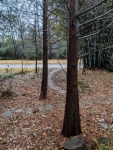



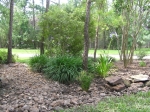
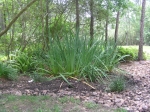


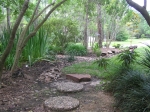

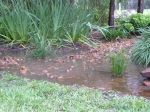
You must be logged in to post a comment.